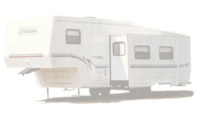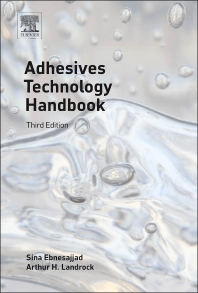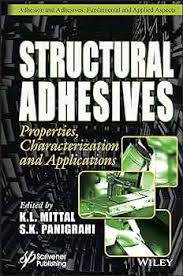Dispensing Reactive Hot-Melt Polyurethane (PUR) Adhesives
Transitioning to reactive hot-melt polyurethane (PUR) offers companies a way to stay relevant and competitive.

There’s no reason companies can’t take advantage of PUR’s myriad benefits without the headaches. By following a few installation, operation and maintenance tips, PUR dispensing technology can offer excellent product results, consistent operation, and minimal downtime.
Is PUR the right material for the job? All adhesive options should be considered to ensure that PURs are the best fit for a given application. Your adhesive supplier will recommend the type and form of adhesive for a specific application, taking into consideration manufacturing-process and finished-product requirements.
While using PUR can provide cost savings, including reduced adhesive and energy usage and optimized labor, both the hot-melt PUR material and dispensing equipment are typically more expensive than traditional hot-melt adhesive and equipment, influencing the payback period in your return on investment analysis. Ask your equipment provider for a budgetary cost estimate so your internal capital request covers the amount you need for PUR dispensing equipment.
Do you have the right PUR? All PURs are not created equal - or the same. PUR adhesives have a variety of open and cure times; a mismatch between operating procedures and PUR characteristics will cause operator frustration and material waste. If PUR is the optimal material, consult with your adhesive supplier to ensure you have the right PUR formulation for your operation.
Do you have the right PUR dispensing equipment? Just as each PUR is different, so are the systems that apply them. Look for a scalable system that protects the integrity of your PUR, offers simplified operation and maintenance, and increases your production efficiency.
Once you have chosen to use PUR, identified the right formulation and selected the proper dispensing technology, two more steps are necessary: learning how to treat your PUR and understand your PUR application equipment.

For successful, easy PUR use, it’s critical to understand all of your PUR’s characteristics. Talk to your adhesive supplier about your specific adhesive requirements. Ask questions like:

The ideal PUR system will accommodate the most specific manufacturing requirements, whether using material forms from a 1-kg slug to a 55-gal drum, or using applicators from non-contact bead to adjustable contact slot nozzles. In addition, consider equipment that incorporates a closed application system, which protects PUR adhesive by minimizing air and moisture exposure.
Selecting the right PUR equipment requires several decisions; however, the right system and the right training can have a significant impact on your success. Look for an equipment provider that offers:

Turn off the heat. While a melter can be turned on at the start of the day and forgotten, hot-melt PUR degrades with heat exposure. This can cause some PURs to cure and, at the very least, will diminish the adhesive’s bonding capability, increasing waste and costs. Over time, as heat exposure causes the PUR to cure inside the system, buildup will occur, constricting flow and eventually damaging the equipment as well.
The solution is simple. Systems that are in continuous use can remain at optimum application temperature without damage because new adhesive is constantly moving through it rather than sitting in the melter waiting to be used. If your production schedule requires that your PUR system be used only a few times throughout the day, ensure that your equipment includes a capability called “temperature setback,” which allows the temperature to be lowered for short periods when the system is not in use. Temperature setback not only protects your adhesive and equipment, but also saves energy and reduces the carbon footprint of your production process.
Regardless of your equipment’s exact usage schedule, reduce the temperature or use the equipment’s standby mode if it’s not running for 15 minutes or more. At night, turn the melter off.
Prevent emergencies. PUR systems may have huge benefits, but tolerance is not one of them. If you let daily, weekly, quarterly or annual maintenance procedures slip, the damage will often show up just when you need the equipment to work most - at peak production time.
The consequences may be severe, but the problem can be avoided by scheduling and performing preventative maintenance. For example, every 3-6 months, depending on use, be prepared to remove and clean applicators, replacing all seals and filters.
With PUR system maintenance, it’s important to follow the rules. Comply with your adhesive supplier’s recommendations and your equipment supplier’s recommendations. Do everything thoroughly and on schedule, and the pain you’ve heard about with PUR will be minimized.
If you don’t have the staff to perform this maintenance, look into a service plan offered by your equipment manufacturer. With a PUR system, planning for consistent maintenance is another part of the investment - and one that will save money in the end. After all, arranging for regular service is less costly than repeated emergency service calls and associated downtime.
Grease is the word. Grease is another example of how getting to know your system is the best way to PUR success. Typically, in PUR systems with slot applicators, using high-temperature grease to seal off exposed areas (such as nozzles or coating head openings) will prevent air (moisture) from contacting the PUR. This is critical because contact with the moisture in air will cause the PUR to begin curing. Applying grease is cheaper, faster and easier than cleaning or rebuilding an applicator due to cured PUR.
Out with the old. In some cases, depending on the specific PUR being used, purging is required. Purge material whenever PUR has been heated and not used for an extended period of time; do not leave PUR in the system for more than 5-7 days. Consult with your adhesive provider to find out if your adhesive requires purging and the best method for doing so.
A little attention goes a long way. All adhesive dispensing systems require some level of regular preventive maintenance in order to run effectively and efficiently long-term. PUR is no different.
With a little extra attention to procedures and maintenance schedules, switching to PUR doesn’t need to be a stressful change. Managing PUR dispensing systems through regular preventive maintenance will result in less downtime, fewer service calls and greater satisfaction. Greater consistency means greater success.
For more information on equipment, visit www.nordson.com.

A well-maintained hot-melt PUR application system helps produce beautiful, durable products for a variety of consumer and industrial products.
There’s no reason companies can’t take advantage of PUR’s myriad benefits without the headaches. By following a few installation, operation and maintenance tips, PUR dispensing technology can offer excellent product results, consistent operation, and minimal downtime.
Implementing PUR
Adjusting to new operating procedures can be a challenge, but the benefits of hot-melt PURs far outweigh these drawbacks. Consider the following when converting to or adding PUR capability to your operation.Is PUR the right material for the job? All adhesive options should be considered to ensure that PURs are the best fit for a given application. Your adhesive supplier will recommend the type and form of adhesive for a specific application, taking into consideration manufacturing-process and finished-product requirements.
While using PUR can provide cost savings, including reduced adhesive and energy usage and optimized labor, both the hot-melt PUR material and dispensing equipment are typically more expensive than traditional hot-melt adhesive and equipment, influencing the payback period in your return on investment analysis. Ask your equipment provider for a budgetary cost estimate so your internal capital request covers the amount you need for PUR dispensing equipment.
Do you have the right PUR? All PURs are not created equal - or the same. PUR adhesives have a variety of open and cure times; a mismatch between operating procedures and PUR characteristics will cause operator frustration and material waste. If PUR is the optimal material, consult with your adhesive supplier to ensure you have the right PUR formulation for your operation.
Do you have the right PUR dispensing equipment? Just as each PUR is different, so are the systems that apply them. Look for a scalable system that protects the integrity of your PUR, offers simplified operation and maintenance, and increases your production efficiency.
Once you have chosen to use PUR, identified the right formulation and selected the proper dispensing technology, two more steps are necessary: learning how to treat your PUR and understand your PUR application equipment.

Application of a nearly invisible side seam of hot-melt PUR helps improve aesthetics for the growing clear plastic carton market for cosmetic and personal-care products.
Understanding Your PUR
The range of PURs available allows for an ideal match to suit your application. However, it also means that each PUR has different characteristics. For example, some tolerate longer heat exposure while others cure quickly in high-heat environments.For successful, easy PUR use, it’s critical to understand all of your PUR’s characteristics. Talk to your adhesive supplier about your specific adhesive requirements. Ask questions like:
- What is the ideal temperature range for this PUR?
- How long can this PUR tolerate that heat before curing?
- What is this PUR’s cure time?
- Does this PUR require purging? If so, how often?

Use of a slot nozzle as part of a closed application system helps protect PUR adhesive from exposure to moisture in the air that can cause premature curing.
Understanding Your Application Equipment
Mastering your equipment is equally important to PUR success. This requires making some changes from how previous non-PUR adhesive application systems have been handled. However, no matter what distinctive set of heating or application procedures your PUR demands, an application technology exists that was created to both handle those procedures and make them as efficient and easy as possible. Your adhesive application equipment supplier should offer expert guidance in finding the best technology for your application.The ideal PUR system will accommodate the most specific manufacturing requirements, whether using material forms from a 1-kg slug to a 55-gal drum, or using applicators from non-contact bead to adjustable contact slot nozzles. In addition, consider equipment that incorporates a closed application system, which protects PUR adhesive by minimizing air and moisture exposure.
Selecting the right PUR equipment requires several decisions; however, the right system and the right training can have a significant impact on your success. Look for an equipment provider that offers:
- Experience and technology specific to hot-melt PUR adhesive.
- An introduction to optimum operating procedures at installation.
- Ongoing availability to answer questions and offer advice on how best to use your equipment and protect your investment.
- Training for new employees and follow-up training to maintain best practices.

In addition to being a solvent-free product, hot-melt PUR use in bookbinding supports recyclability and sustainability initiatives.
Maintaining PUR Equipment
Keep your PUR dispensing equipment in peak condition for consistent operation and minimal downtime by following these tips.Turn off the heat. While a melter can be turned on at the start of the day and forgotten, hot-melt PUR degrades with heat exposure. This can cause some PURs to cure and, at the very least, will diminish the adhesive’s bonding capability, increasing waste and costs. Over time, as heat exposure causes the PUR to cure inside the system, buildup will occur, constricting flow and eventually damaging the equipment as well.
The solution is simple. Systems that are in continuous use can remain at optimum application temperature without damage because new adhesive is constantly moving through it rather than sitting in the melter waiting to be used. If your production schedule requires that your PUR system be used only a few times throughout the day, ensure that your equipment includes a capability called “temperature setback,” which allows the temperature to be lowered for short periods when the system is not in use. Temperature setback not only protects your adhesive and equipment, but also saves energy and reduces the carbon footprint of your production process.
Regardless of your equipment’s exact usage schedule, reduce the temperature or use the equipment’s standby mode if it’s not running for 15 minutes or more. At night, turn the melter off.
Prevent emergencies. PUR systems may have huge benefits, but tolerance is not one of them. If you let daily, weekly, quarterly or annual maintenance procedures slip, the damage will often show up just when you need the equipment to work most - at peak production time.
The consequences may be severe, but the problem can be avoided by scheduling and performing preventative maintenance. For example, every 3-6 months, depending on use, be prepared to remove and clean applicators, replacing all seals and filters.
With PUR system maintenance, it’s important to follow the rules. Comply with your adhesive supplier’s recommendations and your equipment supplier’s recommendations. Do everything thoroughly and on schedule, and the pain you’ve heard about with PUR will be minimized.
If you don’t have the staff to perform this maintenance, look into a service plan offered by your equipment manufacturer. With a PUR system, planning for consistent maintenance is another part of the investment - and one that will save money in the end. After all, arranging for regular service is less costly than repeated emergency service calls and associated downtime.
Grease is the word. Grease is another example of how getting to know your system is the best way to PUR success. Typically, in PUR systems with slot applicators, using high-temperature grease to seal off exposed areas (such as nozzles or coating head openings) will prevent air (moisture) from contacting the PUR. This is critical because contact with the moisture in air will cause the PUR to begin curing. Applying grease is cheaper, faster and easier than cleaning or rebuilding an applicator due to cured PUR.
Out with the old. In some cases, depending on the specific PUR being used, purging is required. Purge material whenever PUR has been heated and not used for an extended period of time; do not leave PUR in the system for more than 5-7 days. Consult with your adhesive provider to find out if your adhesive requires purging and the best method for doing so.
A little attention goes a long way. All adhesive dispensing systems require some level of regular preventive maintenance in order to run effectively and efficiently long-term. PUR is no different.
With a little extra attention to procedures and maintenance schedules, switching to PUR doesn’t need to be a stressful change. Managing PUR dispensing systems through regular preventive maintenance will result in less downtime, fewer service calls and greater satisfaction. Greater consistency means greater success.
For more information on equipment, visit www.nordson.com.
Links
Looking for a reprint of this article?
From high-res PDFs to custom plaques, order your copy today!








